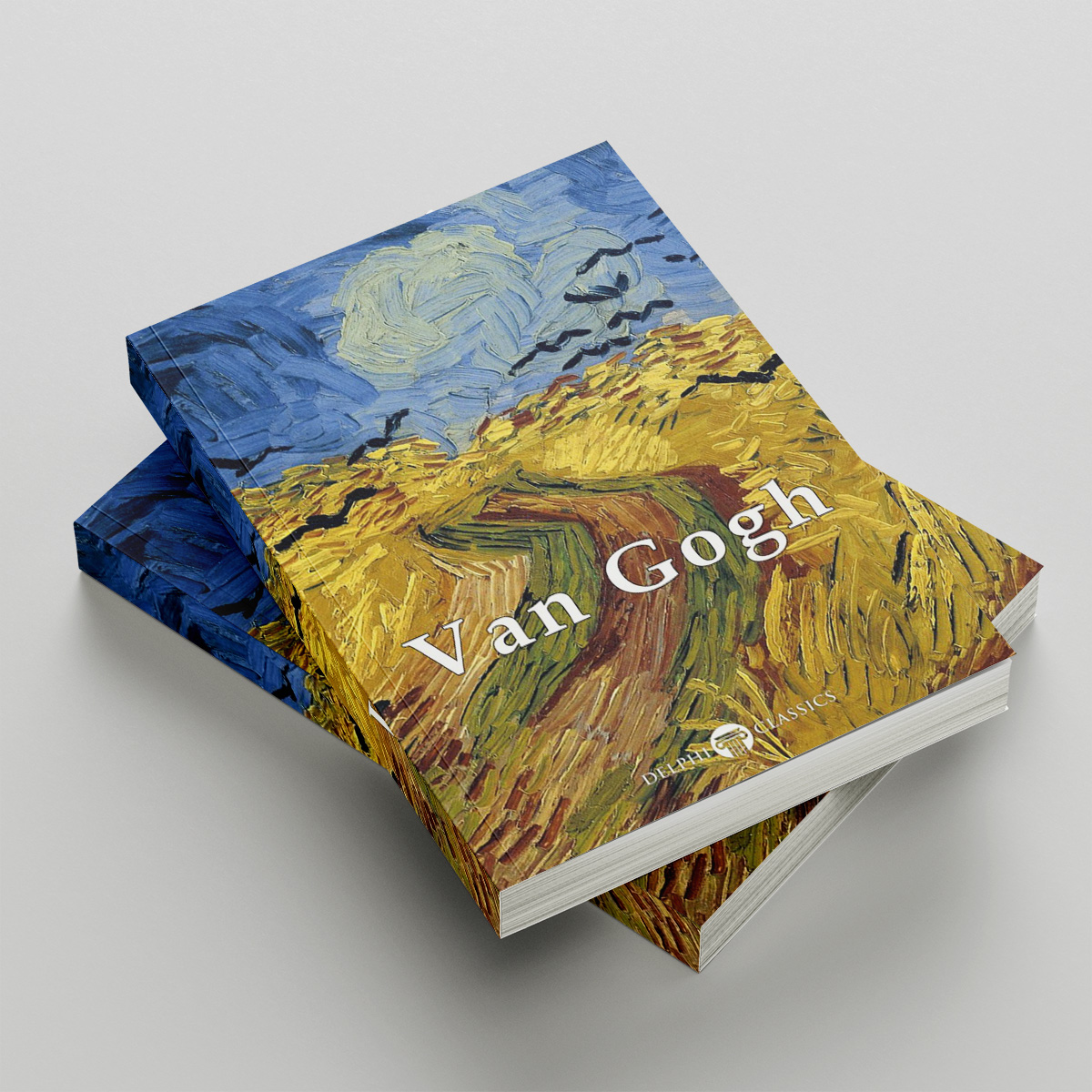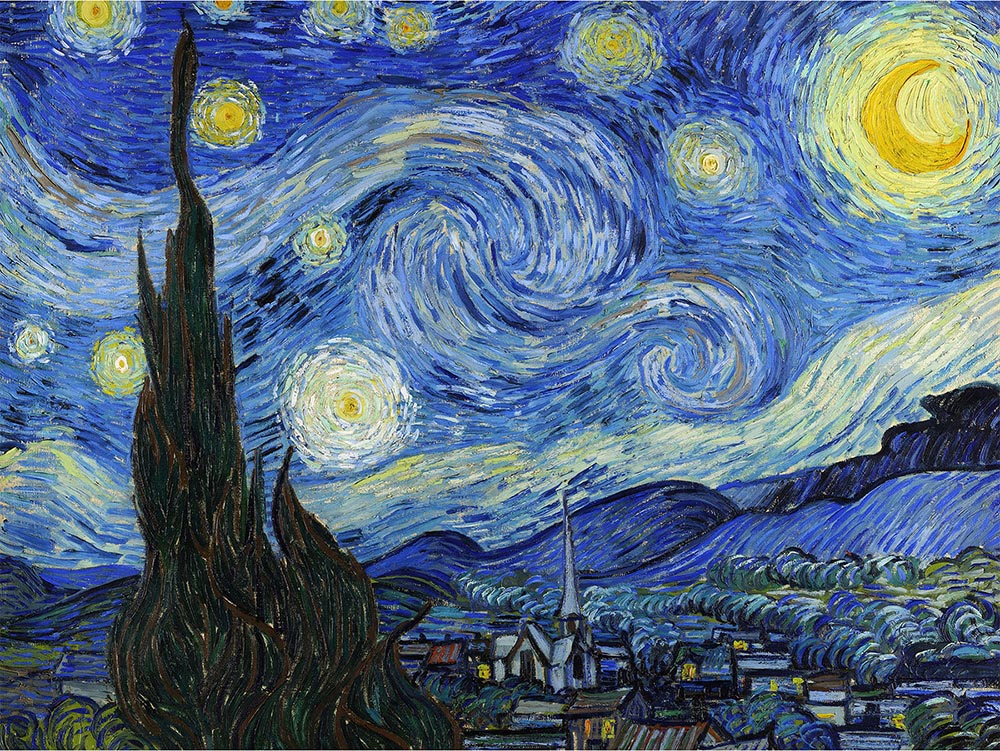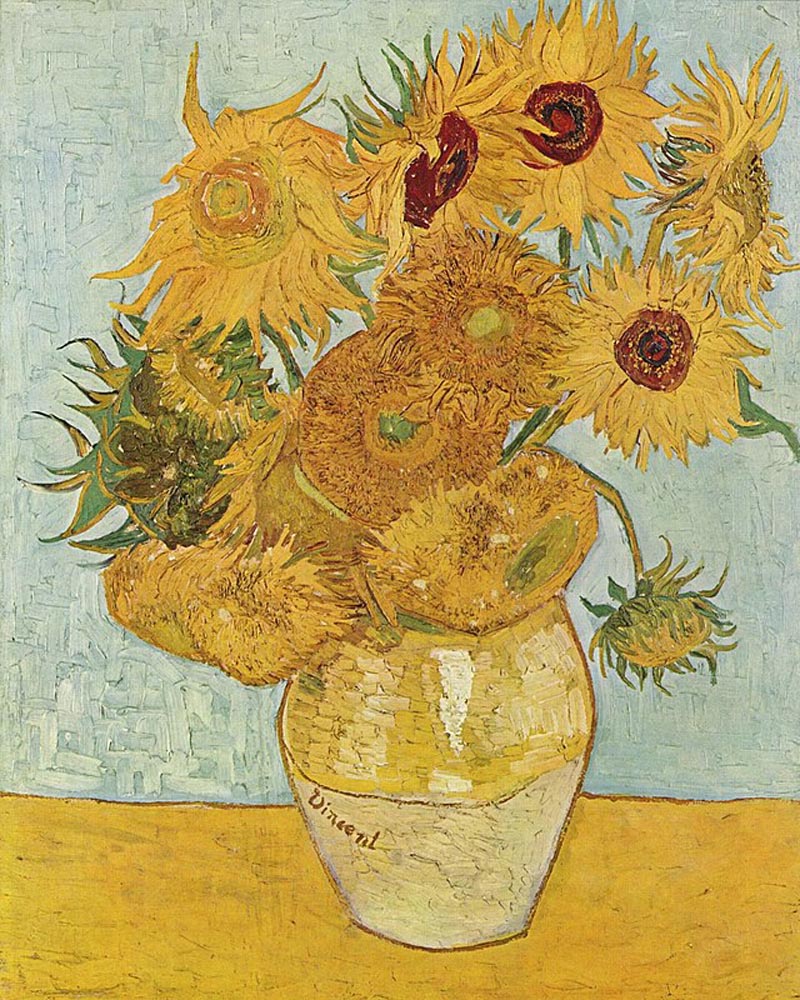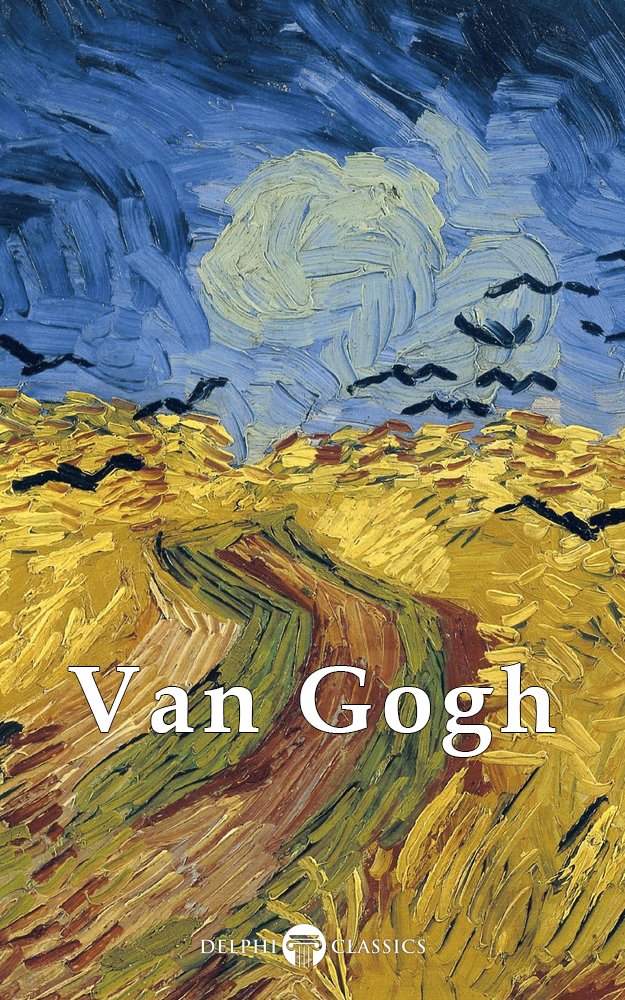
The Creative Torment of Van Gogh
The Creative Torment of Van Gogh
Essay on the book: Delphi Complete Works of Vincent van Gogh
Essay on the book: Delphi Complete Works of Van Gogh.
- The magical and exciting world of art has always been able to captivate our souls and transport us to universes of incomprehensible beauty. For the life and work of Vincent van Gogh endures in our hearts as a tireless example of dedication and creative frenzy.
Introduction
This unique Dutch artist knew how to capture in each of his canvases all the intensity of his stormy emotions, managing to move us deeply decade after decade. Although Van Gogh was only 37 years old, the depth of his artistic legacy is such that his influence transcended borders and cultural barriers, managing to capture the passion of millions of spectators around the world who find in his paintings the magical summary of your purest desires. As if his brush had been able to capture the very essence of the human soul in each of his strokes.
His emotional landscapes and portraits, loaded with intense chromatic lyricism, seem to take on a life of their own and speak to us in a language that we can all understand despite temporal barriers. It is as if the deepest swings of the spirit emerged from the canvas, in a kind of artistic catharsis masterfully captured. Well, his legendary mental fragility seemed to find in painting the necessary balm to externalize his internal torment, channeling his energy into works that today we admire as truly indispensable pieces of universal art.
Each of his creations invites you to immerse yourself in a world of intense emotions where the painting technique takes on almost magical dimensions. The telluric force of Van Gogh still resonates in us perennially, eclipsing the implacable barriers of time, since his work knew how to touch the most sensitive fibers of our being in an irreplaceable way. His sonic landscapes seem to come to life through the magic of his color palette, sometimes intensely violent but always charged with heartbreaking beauty.
That is why it is extremely enriching to delve into the exciting universe that runs through this vast monograph on the artist. Well, through it we will be able to unravel the mysteries of his tortuous but fascinating existence, as well as know in depth his creative process and the fundamental keys to his painting technique. Likewise, this essay will allow us to become familiar with some of his most representative key works that endure in the collective imagination as true artistic milestones.
Thus, through the pages of this publication, we will embark on an extraordinary journey into the tormented but brilliant soul of one of the most influential creators of contemporary art. A journey that will undoubtedly move us and remain indelibly etched in our memory, as we discover the beautiful and heartbreaking universe that Vincent van Gogh was able to capture so masterfully.
Van Gogh’s constant struggle to find his way
Vincent van Gogh’s tortuous existence was marked by a tireless search for his true calling. Coming from a humble family of shepherds, his early years were spent far from the creative peak that he would later demonstrate. His initial ambitions focused on religion and teaching, a path he undertook without any success because his indomitable character prevented him from doing so.
After leaving his theological training behind, his steps took him to the world of art trading where he worked hard although without much personal satisfaction. However, it was in this period that he began to develop a growing passion for painting, although at that time he still felt unable to consider it as his destiny. Well, the decision to resign from his position in the prestigious Goupil house meant entering a future full of uncertainties.
Thus, without a fixed direction, he tried different paths that only added torment to his already troubled existence. Among them, his failed experience as a schoolteacher in England and his vain attempts to practice evangelism in Belgium. Frustrations that increased his melancholy and plunged him into deep depression, making him feel like a complete failure in the face of the incomprehension of others.
It was when he hit rock bottom, wandering aimlessly through the Borinage Coal Mines, that he finally found his true reason for being: painting. As he himself stated, it was in that moment of extreme hopelessness when he decided to take up his brush again, a riddle of the destiny that held for him the long-awaited redemption. For upon discovering that his true essence resided in art, he was spiritually reborn to face this destiny.
Since then, despite the countless disappointments that the path would bring him, nothing and no one was able to deter him from his course. With an admirable determination, which can only spring from the soul of great creators, he dedicated the last years of his short existence body and soul to polishing his brilliant pictorial talent. For although the world little understood his art during his lifetime and his mental fragility tragically increased his loneliness, nothing was able to break his blind faith in the redemptive power of his brush.
This is how, against all odds, Van Gogh’s inner torment found in painting the balm for his pain and, through his immortal work, he knew how to redeem himself and achieve the glory he had longed for. An existence marked by struggle where genius finally won out, leaving us as a legacy works that will last forever in the depths of our being.
The loneliness that Van Gogh felt throughout his life
Vincent van Gogh’s stormy existence was marked by a deep pain that accompanied him from very early times: loneliness. A path traveled alone, far from the warmth of affection, that began in the distant and rural town of Zundert, within a family of shepherds. There, his untamed and unconventional temperament made him feel disconnected from the environment of his birth.
Later, his isolation was accentuated during his frustrated period as an art dealer. Well, although he lived in important European cities such as London, his eccentric character prevented him from establishing significant ties. His loneliness was his only company, as his inner turmoil kept him away from any type of social interaction. An emotional void that he only managed to calm momentarily in the company of the Loyer family, although that impossible love ended up destroying his fragile balance.
Nor in his wandering years as a teacher did he manage to find shelter for his ailments. Well, his unruly nature clashed with the school routine and, even within modest working-class families, his character ended up isolating him. Already in the unfortunate days of Borinense, he traveled like a true ghost through those desolate coal heaths, where his loneliness reached unsuspected heights.
But loneliness not only surrounded him from the deepest part, but also influenced his own work. Well, his paintings, groundbreaking for the time, received little recognition during his lifetime and, even among colleagues, few knew how to value the height of his genius. Only the sincere friendship of Theo, and some other artistic comrades like Van Rappard, were able to glimpse the great painter who was hiding behind his tangled existence.
In this way, his loneliness became absolute in the last stages of his unfortunate biography. Well, nothing and no one was left with him except his art, the only balm for a tormented soul. It was a constant that clouded his entire journey, marked by suffering until his last breath. However, posterity knew how to recognize the greatness of a genius who expressed, like no one else, the tragic beauty of the human condition.
Three emblematic works of Van Gogh
Three canvases stand out from the rest of Van Gogh’s production, as truly universally recognized masterpieces. We are referring to The Starry Night, The Sunflowers and The Potato Eaters, a triptych that perfectly summarizes the pictorial grandeur of the Dutch artist.

Let’s start at night, more specifically with that starry night that Vincent immortalized in the sky of the Provençal town of Saint-Rémy. When looking at the firmament full of stars, his chromatic delirium gave free rein to the creation of a celestial vault of sublime beauty. A chromatic explosion of blue and green tones, short and energetic brushstrokes that turned this scene into a visual poem. Well, he managed to capture on canvas what, according to his own words, was “consoling like music,” leaving for posterity one of his most universal works.

They are succeeded in importance by the Sunflowers, flowers that he cultivated with devotion in Arles and elevated to the category of symbol. Well, he was so determined to entertain Gauguin that he covered the walls of his Yellow House with two bouquets, thus granting this pictorial series a card of nature. However, what stands out above all is that vase full of golden blossoms, vibrant due to the range of yellows and oranges used. Beautiful allegory also of the transience of life, as he himself hinted with his early withering.

We close with the shocking scene featuring The Potato Eaters, in possibly one of the most representative pictograms of expressionism. Well, in this canvas, where he portrayed peasants from his beloved Brabant, he wanted to immortalize the dignity of workers’ work. And with short, thick brushstrokes she captured with extraordinary veracity the harsh existence of those men. For this reason, this painting also stands as an emblem of the human condition seen by the Dutchman.
They are three major works that universally consecrated a cursed genius and that, like cornerstones, support the arch of expressionism. Well, in them he explained with singular mastery what he longed to convey through color, how it was “something comforting.” And boy did he achieve it, leaving three masterpieces for eternity.
The little recognition that Van Gogh received
It was tragic and more than unfair how little credit was given to Van Gogh during his brief existence. He barely sold a work during his lifetime and the figure of an erratic painter was not understood by the society of that time. Yet he clung to his path with indomitable determination, convinced of the future greatness of his art.
He received more criticism than praise from his peers, who did not understand his desire to distort reality from a purely chromatic perspective. His revolutionary expressionist style clashed with the then prevailing impressionist current. Well, in the eyes of other artists he seemed like a wild amateur and intolerant of criticism.
Nor did the general public value his work, oblivious to the future significance of his daring work. His works could seem in those years to be a chaotic jumble of violent and irrational brushstrokes, when in reality they were ahead of his time. However, his blind faith in the power of color did not waver despite the continued postponement.
His brother Theo was practically his only follower and supporter, firmly believing in Vincent’s genius even in his worst moments of crisis. Furthermore, if it were not for the unconditional support of his faithful brother, it is likely that art history would have been deprived of many of his most outstanding works. Well, when the rest were against him, Theo emerged as his greatest ally.
The loneliness that overwhelmed the painter and his frustration at the lack of empathy in his surroundings were, therefore, tragic. But he did not let the disdain of the moment cloud his only goal: to create for generations to come. And what poetic justice fate gave him, posthumously recognizing the teacher who was despised during his lifetime.
Conclusion
Without a doubt, the life and work of Vincent van Gogh represent a clear example of how genius is sometimes unusually misunderstood at the time in which he lives. But such incomprehension only fueled his indomitable spirit and inflamed his creative passion.
Years after his tragic death, the world finally recognized the artistic magnitude of someone who was marginalized in life. For this reason, poetic justice wanted to compensate him by granting him the posthumous fame that he deserved from the beginning. In this way, the oblivion to which he was subjected was transmuted into a universal celebration of his inalienable pictorial work.
Today it is inconceivable that someone does not know the name of Van Gogh, since he became an emblem of the genuine cursed artist and his figure transcended mere painting to rise to myth. However, he had to fight valiantly against the adversities of his time, when his bold strokes failed to achieve understanding.
It must be admitted, in short, that Van Gogh’s tempestuous existence is deeply moving, because he knew how to extract beauty from despair itself, extracting from pain a spring of creation. His painful biography therefore leaves invaluable learning for future generations about the need to protect the creator and promote the free development of art from society.
However, not everything was suffering in the life of the brilliant Dutchman. For among the shadows that enveloped her, there were also flashes of light and moments of creative happiness that served as a balm. Such was the case of the happy years he spent in French Provence, where he gave free rein to his inspiration in wonderful works such as “The Starry Night.” It was there where he captured some of his most emblematic creations, far from the rejection that he had found in his homeland.
The devoted friendship that his brother Theo professed to him was fundamental to sustaining his creative spirit, helping him financially at all times so that nothing would prevent him from dedicating himself body and soul to his pictorial passion. Well, without Theo’s unconditional support, Van Gogh’s artistic work probably would not have reached the plenitude that we admire today. That is why his name will be forever linked to that of the painter, in recognition of such selfless fraternal support without which the history of art would be much poorer.
With this exciting story, there is evidence, therefore, of how a man of tortured genius knew how to club his way to immortality. Therein lies Van Gogh’s most beautiful legacy for a humanity that, too often, condemns those who are ahead of his time.





0 comments